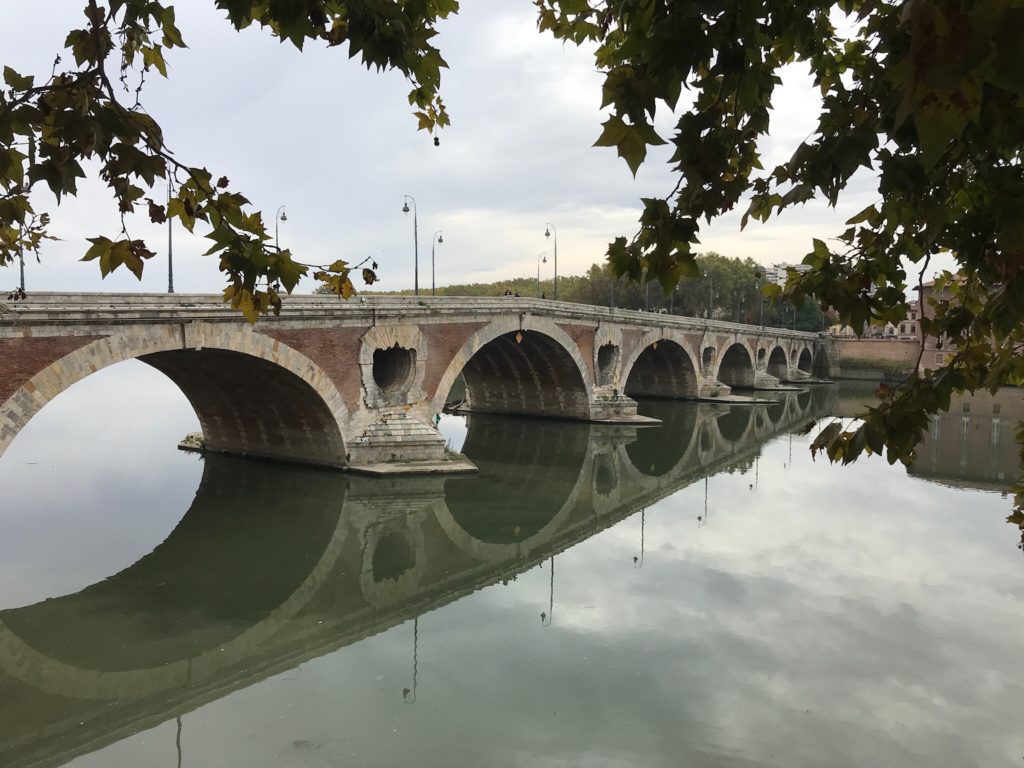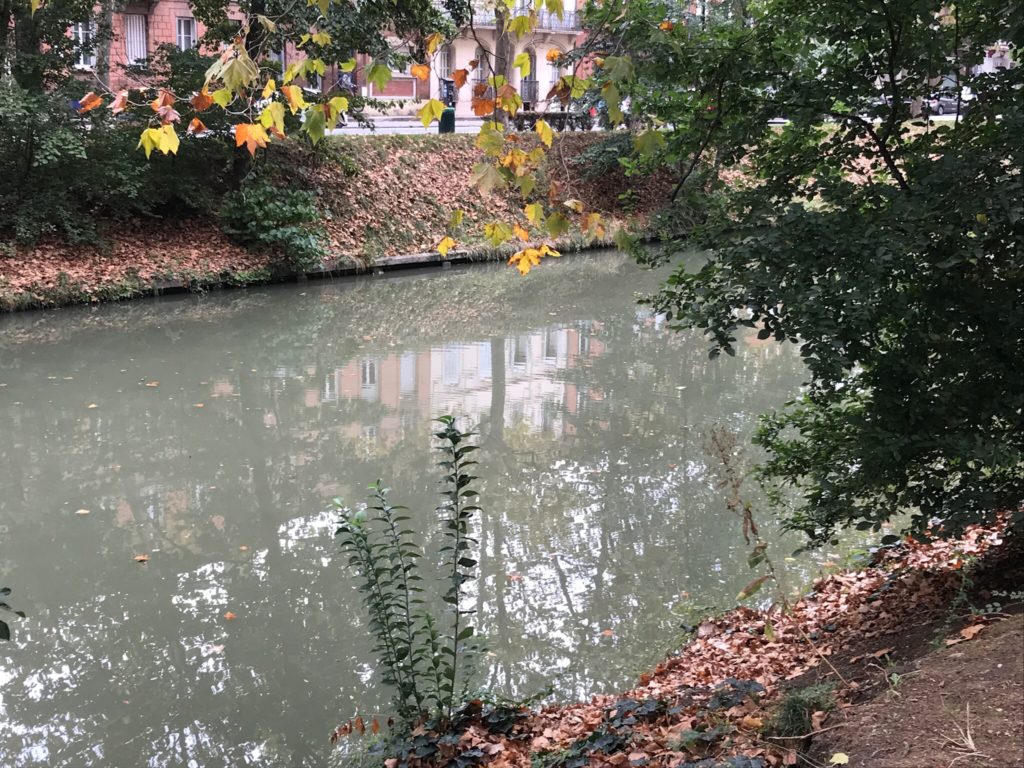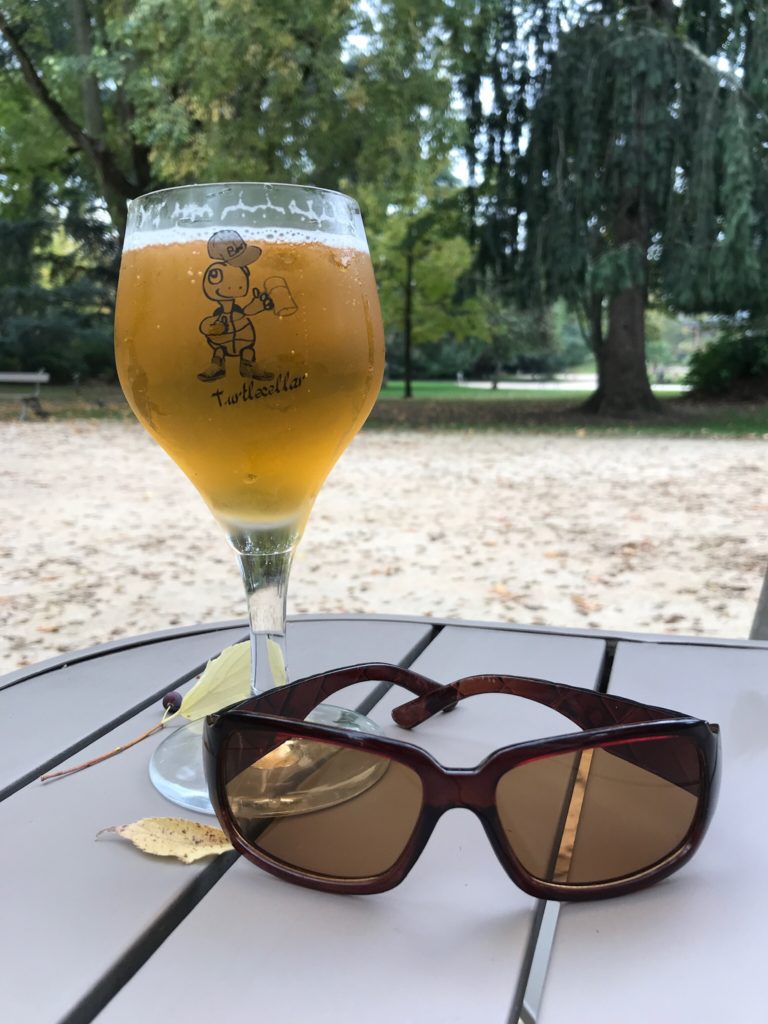28 October 2019

I like Toulouse. I can’t be much more enthusiastic than that. It is well-located for visiting some great sites in this southern part of France, like marvelous Carcassonne. It is on the road to Andorra. I has some nice parks, pathways along the historic Canal du Midi and River Garonne, big churches and bigger streets and squares.
Toulouse also is suffering from Yellow Vest protests, lots of homeless and scrounge backpackers, and cancelled trains. The “like” classification comes from our hotel’s wonderful concierge and the helpful and friendly SNCF agent who rebooked our train to get us out of town. And the delightful conductor who told us we would catch our TGV To Paris from platform 1 in Bordeaux.
“We have a seat, we have a train. We will get to Paris!”
No train to Toulouse? Was this a warning? I booked an autobus via Oui.sncf to take us from Lourdes to Toulouse. The countryside is beautiful as trees are turning brilliant shades of reds and yellows. Snow capped mountains occasionally rise to the south. But the sun is shining, temperatures are warm, and the ride to Toulouse is comfortable. We transit Tarbes and then begin to gradually climb over hills and along pastures and fields of lots of corn ready to harvest, cows, and eventually some vineyards.
First, the city of Toulouse, capital of France’s southern Occitanie region, was not the birthplace of the great post-impressionist artist Henri de Toulouse-Lautrec. However, although born in southern France and hanging out in Nice, living much of his life in Paris, Toulouse-Lautrec did get a portion of his name from the city. He was a descendant of the Counts of Toulouse who once ruled this area of Occitanie from the 8th to the 13th centuries.
Toulouse is bisected by the Garonne River (the river slicing through Bordeaux) and sits near the Spanish border. It’s known as La Ville Rose or The Pink City because many of its buildings are built of terra-cotta brick. The 17th-century Canal du Midi links the Garonne to the Mediterranean Sea, and can be traveled by boat, bike or on foot – just not this late in the season.

The canal is UNESCO recognized as it is considered one of the greatest construction feats of the 17th century. This canal of two seas begins at the Mediterranean and weaves its way for 150 miles across southern France to Toulouse. There it joins the Garonne River and Canal de Garonne to continues its waterway all the way to Bordeaux and the Atlantic. Work began in 1666 as a way to move trade. Construction finished in 1681 and the Canal du Midi remains one of the oldest canals in all of Europe still in operation.
Boats and barges up to 98-feet ply the canal, many of them DYI sailors. The maximum width, because of the narrowness of the canal in places, is 18-feet. Originally there were 86 locks between here and the Mediterranean. Only 65 have survived.
Toulouse is a pleasant city. A top sight for me includes Basilique Saint-Sernin finished in the 1100s and possibly the largest Romanesque church in Europe. It has a unique brick tower and a large number of the relics from over 120 saints in the crypt were donated by Charlemagne. There is also a thorn said to have come from the Crown of Thorns. However, the crypt is not open today.

Saint Stephen’s Cathedral/Saint-Étienne was first mention as early as 844. It took over 500 years to complete the existing edifice resulting in a mix of architectural twists and turns. But there are some nice tapestries and nice walnut choir stalls from the early 1600s. Look for the carvings of pagan and mythical figures carved into the wooden stalls. Also, the stained-glass windows are the city’s oldest. The Pietà by Gervais Drouet is nice.

The green and relaxing Grand Rond, it’s surrounding parks and gardens, provides a respite from the noisy and crowded city centers. Don’t miss the interesting sculptures at the northern exit. Two cast iron sculptures of a female dog and a female wolf, watching each other, protecting their pups dominate the avenue. Pierre Louis Rouillard, a French sculptor known for his sculptures of animals, created the iron canines. I think the wolf has kidnapped one of the dog’s pups and, with her protective paw around the pup, has claimed it as hers.
The Place du Capitole is sort of the city center and its surrounding buildings and the neoclassic palace is quite stunning. Here, I can see where Toulouse gets its sobriquet of “Pink City.” The sunsets paint the façades a lovely shade of pink. The large square is a center for activities, markets and cafes.

When one tires of churches, relic bones or walking, there are endless cafes and restaurants to park ones own tired bones. A couple glasses of beer and the threat of French train strikes diminish. I must say “Life is Good, even in Toulouse.”
0 Comments